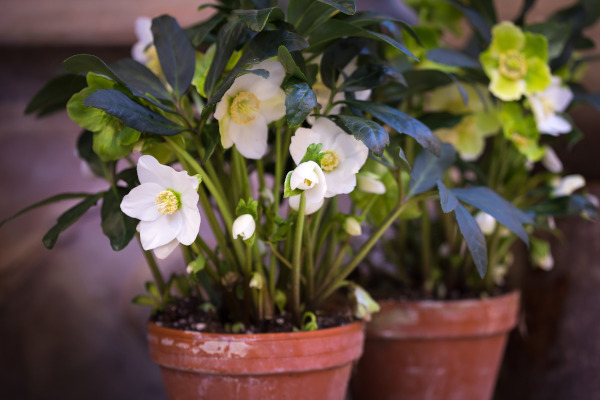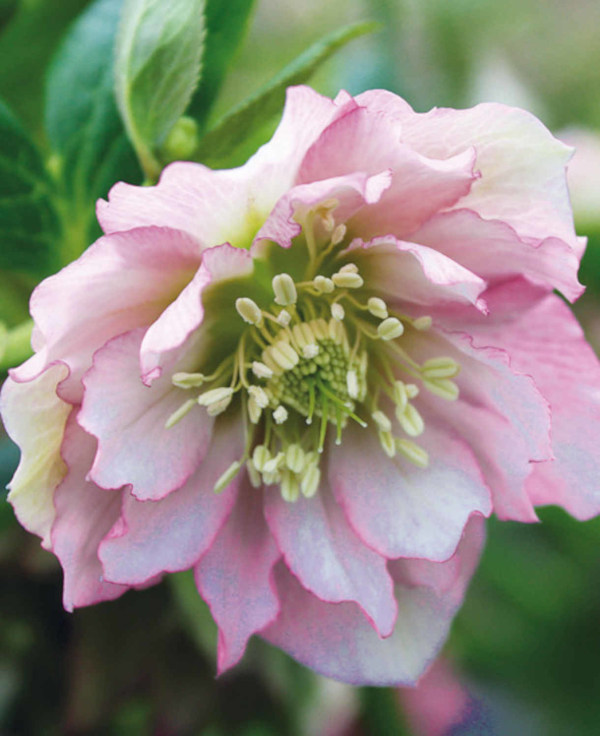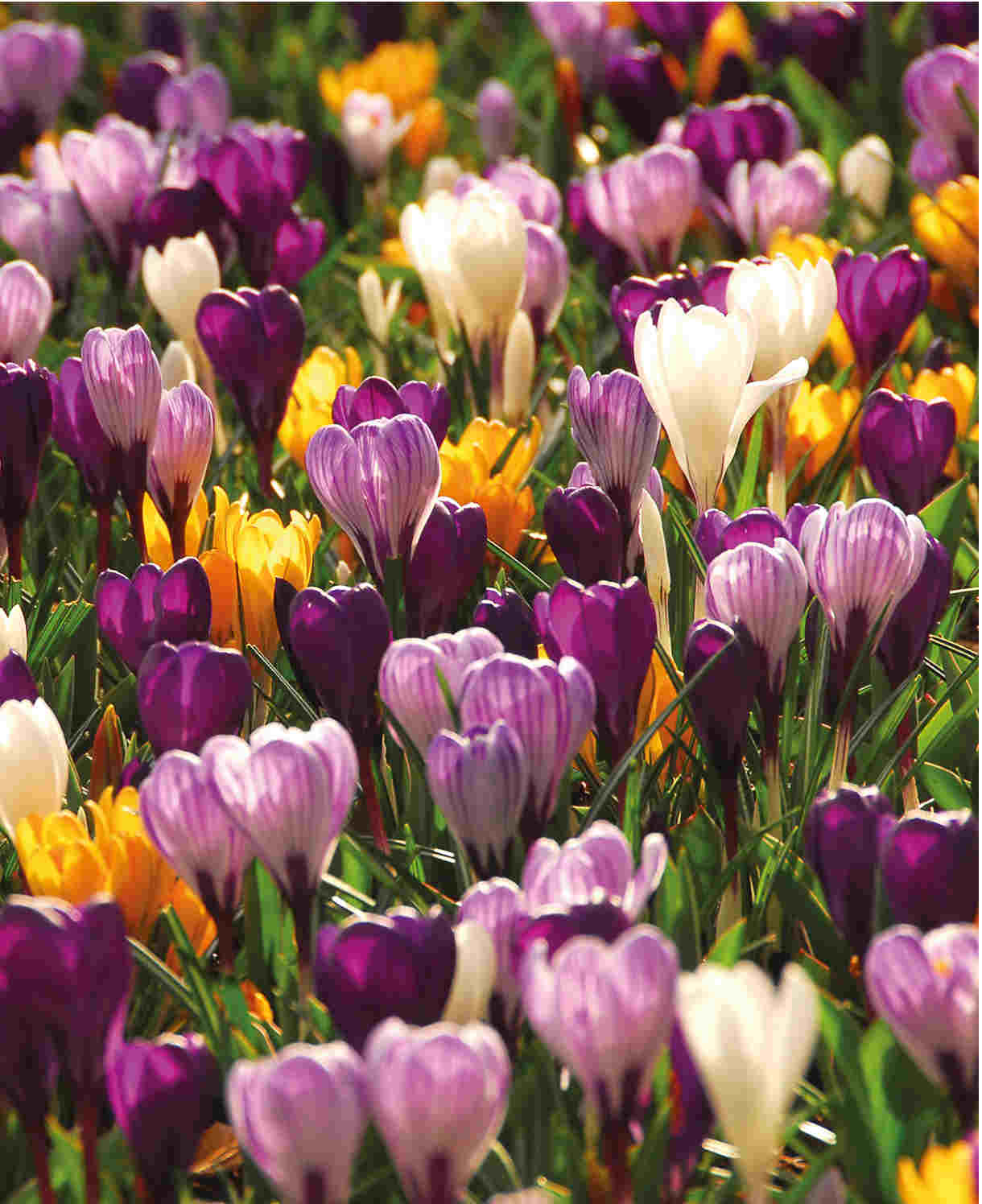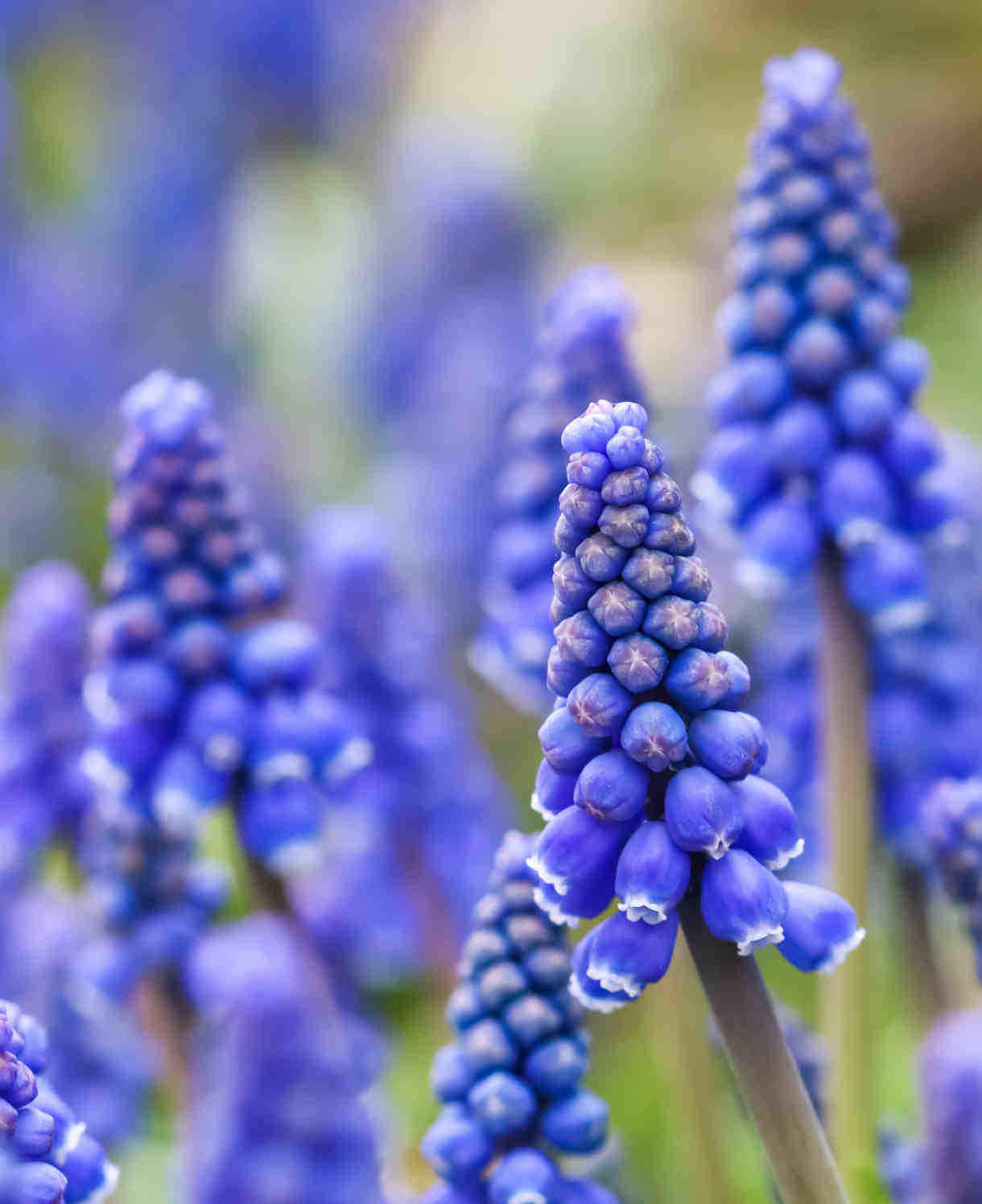How to grow Helleborus
Helleborus is a genus of around 15 species of hardy perennials, found growing in dappled shade in woodland, scrub, and grassy and rocky sites throughout C., E., and S. Europe to W. Asia. These members of the buttercup family are invaluable cold-weather interest plants in the garden, their blooms braving the chill to flower at a time when little else is at its prime. Flowers are elegant nodding or outward facing and usually cup-shaped, in shades of green, white, pink, plum and purple. Some varieties can be spotted, or freckled.
Foliage is handsome, leathery, palmate leaves which are usually evergreen, providing year-round interest.
Hellebores tend to be easy, undemanding plants to grow. To see at their best grow in groups or allow to naturalise and form drifts.

Key Information
Position
Soil Conditions
Hardiness


Where & when to plant Helleborus
Position- Dappled shade, with shelter from strong, cold winds
Soil- Fertile, evenly moist (hellebores dislike extremes, so no dry or waterlogged soil)
Flowering Period- Late winter to mid spring
Hardiness- Hardy
Helleborus can be planted at any time of year, if kept in a cool shady area in the heat of summer. But for optimal results, plant hellebores in early autumn, to allow them to establish roots before the ground freezes. Early spring planting is also possible, but fall planting encourages healthier growth and better blooms. Choose a spot with partial to full shade, ideally under deciduous trees, so they benefit from shade in the summer and sunlight during their winter bloom.
Hellebores prefer well-draining, humus-rich soil with a slightly alkaline to neutral pH. Before planting, amend the soil with compost to improve nutrient content and drainage. Space plants about 18 inches apart, as they’ll spread over time. Avoid locations with heavy clay soils or where water pools, as hellebores are susceptible to root rot. Once established, hellebores are relatively low-maintenance and, due to their evergreen foliage, will provide year-round interest, adding structure and colour to shaded areas of the garden.
How to plant Helleborus
In the ground
- Clear the chosen area of weeds.
- Dig a planting hole several times larger than the root ball as this will encourage roots, and your plant, to spread outwards. Now is the time to give your soil a boost with the addition of plenty of well-rotted organic matter, and, if liable to sit wet, plenty of horticultural grit.
- Place the plant in the hole, ensuring the top of the root ball sits level with the surface of the soil. Too low and the plant may rot, too high and the roots can dry out.
- Backfill with soil and firm in gently.
- Soak well with water.
In a container
- Choose an appropriate container, ensuring there are plenty of drainage holes.
- It can be worth potting up large containers in situ to save yourself the trouble of moving once full.
- Use a good quality potting compost with some horticultural grit mixed in, and, if not already present in the compost (check the description on the bag) some slow-release plant food.
- Start by partially filling the pot with compost; enough so that when placed on it the upper surface of the root balls are about 3cm lower than the top of the pot.
- Infill all the space surrounding the root balls with compost, firming down with your fingers then adding a little more so the plants are held tight.
- Pick up the pot (if you can!) and lightly tap on the potting bench or ground a few times to help further settle the compost around the plant.
- Soak well with water.
- A mulch with horticultural grit will look attractive and help to prevent a ‘cap’ or crust forming on the top of the compost (something container plants can suffer due to the artificial nature of their watering).

What to plant with Helleborus
Hellebores make perfect partners to spring flowering bulbs as well as other, shade-loving evergreens. The flowers of the (slightly later to arrive) spring bulbs help to distract from the fading hellebore flowers. Similarly, the fresh new, evergreen leaves of the hellebore cover the dying foliage of the bulbs.
Think snowdrops, bluebells, chionodoxa, muscari, winter aconite and crocus, with hostas, ferns, and wood spurge.
If you would like any further planting ideas or growing advice for your helleborus, please contact our friendly and knowledgeable Customer Care Team - we will be more than happy to help you.



How to care for Helleborus
Pruning and Deadheading
Cut back the large leaves of the previous year once new foliage and flowers start to appear. This will help to avoid fungal infection (hellebores can be prone to leaf spot), as well as ensuring flowers are fully visible.
Watering
Water this moisture-loving plant well until established, then in very dry periods as required.
Cold Protection
Hellebores are fully hardy, requiring no winter protection.
Pests and Diseases
Hellebores can be susceptible to aphid attack, specifically the large, white ‘hellebore aphid’. These tend to appear on the undersides of leaves and flowers in early spring. Soap spray or a vigorous blast from a hosepipe can help to disperse these unwelcome visitors.
Leaf spot can be a common affliction among hellebores. It is particularly prevalent in damp conditions and appears as brown patches on leaves, before spreading to stems and flowers. Good hygiene can help prevent this; remove all infected leaves in winter and be sure to remove any which have fallen to the ground. Dispose of thoroughly (i.e. burned or removed, rather than put on the compost), to stop the spread of fungal spores.
How to propagate Helleborus
Most hellebores are best propagated by division, which should be carried out after they finish flowering. Not only does this maintain the health, vigour, and appearance of existing specimens, it will also provide you with extra plants which are true to the parent.
There are exceptions to this advice; H. foetidus and H. argutifolius are not suitable for division and are best propagated by seed. Sow these in containers in a cold frame as soon as they are ripe.
Cultivated hellebores (those with cultivar names) will self-seed readily, though cross-pollination means resultant plants are unlikely to ‘come true’ to the parent. Occasionally, the results may be attractive and desirable, though more often they will be a non-descript, dull pink. Deadhead before plants can set seed if you wish to avoid this.
Common Helleborus Questions:
Why is my hellebore not flowering?
Hellebores can take three to four years to reach flowering stage. If you are growing new plants from seed, you will need to bear this in mind.
My container grown hellebores are looking rather sad. What might the problem be?
The natural habitats of hellebores tend to moist, shady, places with plenty of leaf fall to enrich the soil. Extra care is required to recreate these conditions in a container – using a good, loam-based compost with additional organic matter, not allowing plants to become too hot or dry, and feeding regularly throughout the growing season are all important things to remember.
Are hellebores good for pollinators?
Indeed, they are. Hellebores are a crucial source of nectar at a time of year when there is little else available. Solitary bees, in particular, rely on hellebores; their emergence from hibernation coinciding perfectly with the first blooms of these winter flowering plants.





